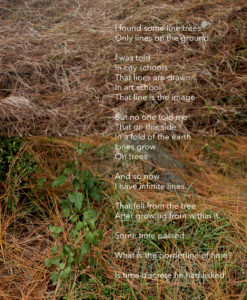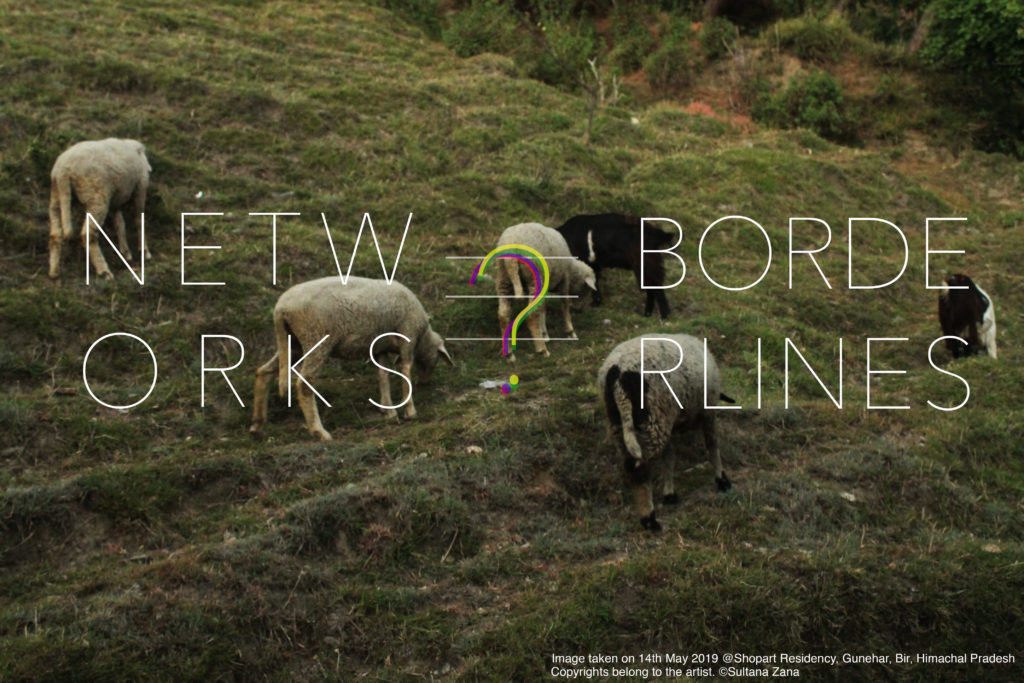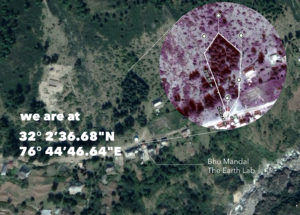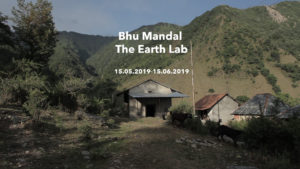Sultana Zana
Multi-media Installation
Before she chose to study art, Sultana Zana had done formal research in nanotechnology and followed it up with a BTech in Electronics and Instrumentation. So it is hardly surprising that her proposal for SAAS-3 states that to her, the human-nature conflict “is a conflict of geometries”. To prove her point, Zana intends to take us into the “worlds within the worlds”, ie. underneath the soil of the surrounding forests, studying and documenting the speed and scale of biological transformations. At the same time, using Google Maps, she intends to gain an aerial perspective of forms and shapes at the intersection between habited and inhabited land. Working with the mathematical ideas of separations and geometries used to create these, like lines, maps and isolating systems, Zana says she is obsessed with networks, communication and perception in nature, and exploring the planetary scale human-nature conflict: “the conflict of logic, geometry and form”.
I study networks. So the question is- what is the borderline of a network? Or are networks borderlines of space? And then the question arises – what is space? Can space be divided?
17th May 2019
Day 2_ The vapour of the concept is condensing on these hills
I found my research site today.
Bhu Mandal_The Earth Lab
In my last project, I had been looking at mycelium networks, and trying to ‘be mycelium’; trying to dissolve my sense perception and perceive through mycelial senses like vibration, moisture and light. It was an experience to try to understand the life of decentralised being. (Excitingly, some great scientific progress was made on this front at the same time as the beginning of this residency, that is, mapping of some mycelial networks across the planet. You can read this here.)
Insights about alternative forms of intelligence lead me to some interesting texts and this inspired me to look at a group naturally grown trees here in the Himalayan fold mountains. This was obviously only made possible through the ShopArt residency.
I had been trying to understand the math of networks before I came here. Puneet Jain, Data Scientist and Mathematician, IISc, Bangalore; and Akif Khan, Physicist, IISc Bangalore; have been helping me in this endeavour.
Seeing the same thing with a different lens always opens up new insights. And so, one of the main objectives of this residency is to map these trees- a geographical physical map of ages and distances; and then to analyse this network of nodes and edges to see if they generate any interesting insights.
This analytical way of looking can be said to be an ‘objective’ view. But I feel only looking in this way is not enough. And so, my understanding of the space by being in it remains an important tool to get a visceral sense of this family of trees.
________________________________________________________________
In the process of being consumed by this landscape and thinking of borderlines; some questions came up.
What is the fractal dimension of this landscape?
Fractal dimension is a mathematical parameter. It can be calculated for computer generated landscapes and is used widely in VFX and for creating realistic landscapes in films. But it is difficult to calculate this for a real landscape because it involves measuring the ‘roughness’ of smoothness’ at different scales.
The idea that I am standing in one of the folds of this fabric is crazy. to take this thought a step further, I decided to step into a deeper crease between two mountain on of the days.
This is an image looking out from within the fold. This was the beginning. Then I went deeper. There are folds within folds within folds all the way down perhaps.
There is another interesting question which came up very early on – it emerged when I found some lines on the site shown at the beginning of this blog.
How can a rule be followed repeatedly/iteratively to create a form that emerges naturally from this process?

This is probably possible to find, but there is not enough time and so I have decided to park it for some time. Perhaps I can stay back and try to find the answer and find forms that emerge out of following different algorithms. It would be interesting to explore recursive procedures, explore space filling curves etc. that look similar at different scales. To explore these phenomena with an infinite number of lines on the ground that have grown out of trees seems exciting.
Since coming to Gunehar, I have been reading Douglas R. Hofstadter’s Gödel, Escher, Bach_ An Eternal Golden Braid-Basic Books (1994). It is a big book but I have already fallen in love.
_________________________________________________________________
Boderlines ? lines ? the end of one thing and the beginning of the other thing
//The image as to be seen in this way: Each text with each image individually.
//How do sheep move on this mountain. Sheep tracks can be found everywhere in these mountains. They change as elevation changes.
//There are millions of paths that a sheep might follow in the process of going from point A to point B.
//In this screenshot of the book, Hofstadter talks about the path of an electron and its representation.
_____________________________________________________________
Mapping the trees with my friend Ranbeer. He holds on one side and I walk across lines which will be edges of the image of the network on paper and screen.













